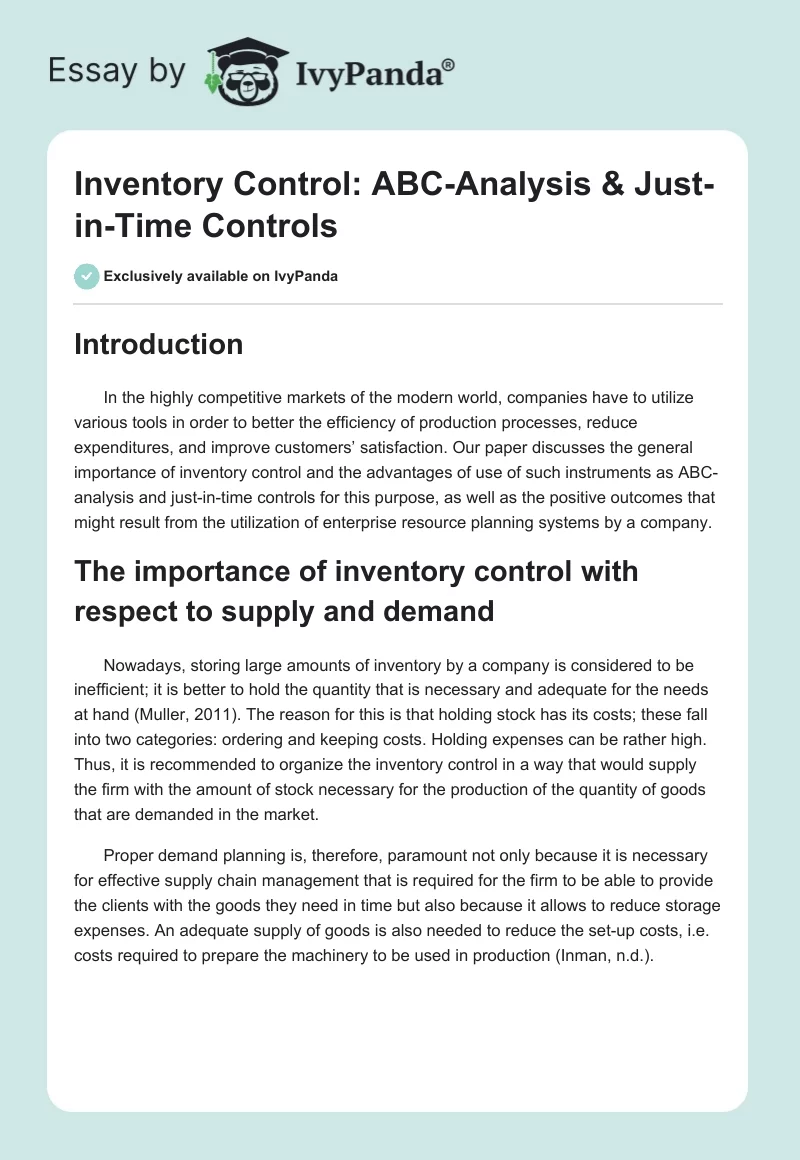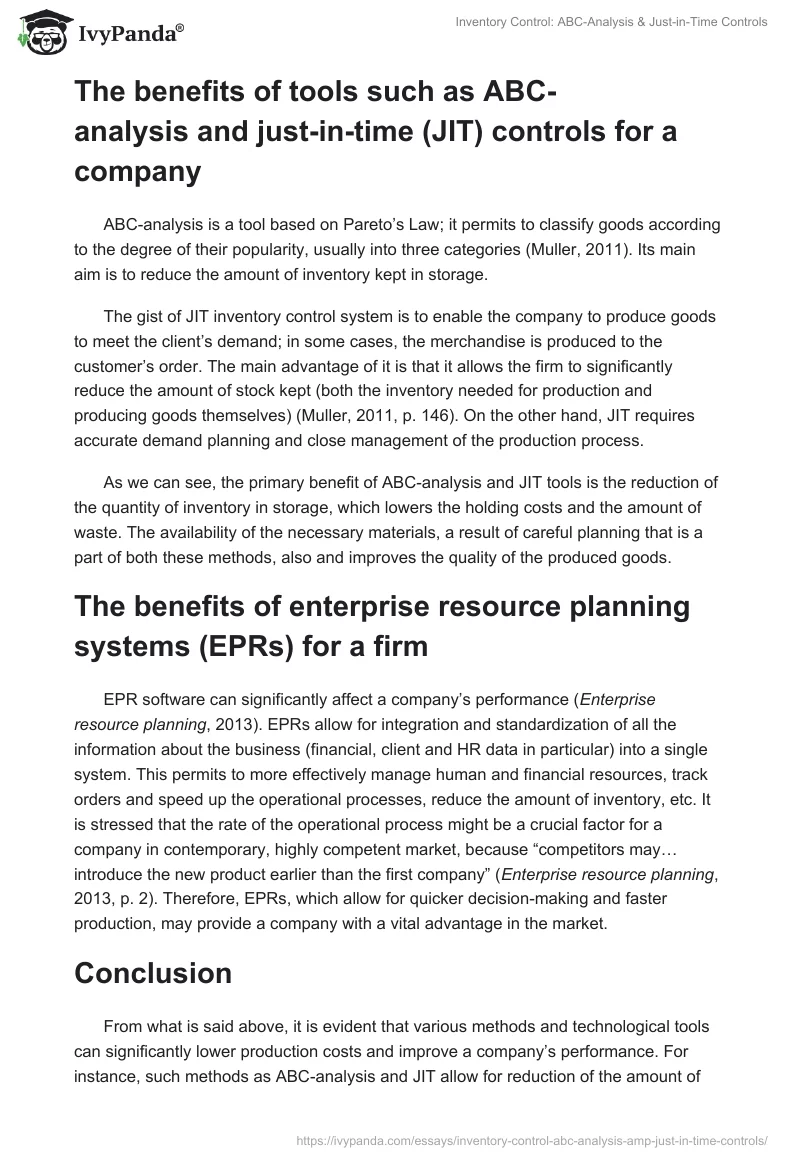Introduction
In the highly competitive markets of the modern world, companies have to utilize various tools in order to better the efficiency of production processes, reduce expenditures, and improve customers’ satisfaction. Our paper discusses the general importance of inventory control and the advantages of use of such instruments as ABC-analysis and just-in-time controls for this purpose, as well as the positive outcomes that might result from the utilization of enterprise resource planning systems by a company.
The importance of inventory control with respect to supply and demand
Nowadays, storing large amounts of inventory by a company is considered to be inefficient; it is better to hold the quantity that is necessary and adequate for the needs at hand (Muller, 2011). The reason for this is that holding stock has its costs; these fall into two categories: ordering and keeping costs. Holding expenses can be rather high. Thus, it is recommended to organize the inventory control in a way that would supply the firm with the amount of stock necessary for the production of the quantity of goods that are demanded in the market.
Proper demand planning is, therefore, paramount not only because it is necessary for effective supply chain management that is required for the firm to be able to provide the clients with the goods they need in time but also because it allows to reduce storage expenses. An adequate supply of goods is also needed to reduce the set-up costs, i.e. costs required to prepare the machinery to be used in production (Inman, n.d.).
The benefits of tools such as ABC-analysis and just-in-time (JIT) controls for a company
ABC-analysis is a tool based on Pareto’s Law; it permits to classify goods according to the degree of their popularity, usually into three categories (Muller, 2011). Its main aim is to reduce the amount of inventory kept in storage.
The gist of JIT inventory control system is to enable the company to produce goods to meet the client’s demand; in some cases, the merchandise is produced to the customer’s order. The main advantage of it is that it allows the firm to significantly reduce the amount of stock kept (both the inventory needed for production and producing goods themselves) (Muller, 2011, p. 146). On the other hand, JIT requires accurate demand planning and close management of the production process.
As we can see, the primary benefit of ABC-analysis and JIT tools is the reduction of the quantity of inventory in storage, which lowers the holding costs and the amount of waste. The availability of the necessary materials, a result of careful planning that is a part of both these methods, also and improves the quality of the produced goods.
The benefits of enterprise resource planning systems (EPRs) for a firm
EPR software can significantly affect a company’s performance (Enterprise resource planning, 2013). EPRs allow for integration and standardization of all the information about the business (financial, client and HR data in particular) into a single system. This permits to more effectively manage human and financial resources, track orders and speed up the operational processes, reduce the amount of inventory, etc. It is stressed that the rate of the operational process might be a crucial factor for a company in contemporary, highly competent market, because “competitors may… introduce the new product earlier than the first company” (Enterprise resource planning, 2013, p. 2). Therefore, EPRs, which allow for quicker decision-making and faster production, may provide a company with a vital advantage in the market.
Conclusion
From what is said above, it is evident that various methods and technological tools can significantly lower production costs and improve a company’s performance. For instance, such methods as ABC-analysis and JIT allow for reduction of the amount of stored inventory, lessening storage expenditures and the amount of waste, at the same time improving customer satisfaction. EPRs, on the other hand, permit to optimize resources and the operational process on the whole, which might give an organization a crucial advantage in the market.
References
Enterprise resource planning: Concepts, methodologies, tools, and applications. (2013). Hershey, PA: IGI Global.
Inman, R. A. (n.d.). Inventory management. Web.
Muller, M. (2011). Essentials of inventory management (2nd ed.). New York, NY: AMACOM.


